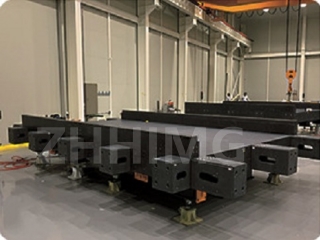Advantages and Application Scenarios of Granite Parallel Ruler
Granite parallel rulers are essential tools in various fields, particularly in engineering, architecture, and precision machining. Their unique properties and advantages make them indispensable for tasks requiring high accuracy and stability.
One of the primary advantages of granite parallel rulers is their exceptional dimensional stability. Granite is a natural stone that is resistant to temperature fluctuations and humidity changes, ensuring that the ruler maintains its shape and size over time. This stability is crucial for precision measurements, as even minor distortions can lead to significant errors in technical drawings and machining processes.
Another significant benefit is the inherent hardness of granite. This durability allows the parallel ruler to withstand wear and tear, making it suitable for heavy-duty applications. Unlike metal rulers, which can scratch or deform, granite rulers provide a long-lasting solution for professionals who require consistent performance.
Granite parallel rulers also offer excellent surface flatness, which is vital for achieving accurate measurements. The flat surface minimizes the risk of errors during alignment and marking, ensuring that the user can achieve precise results. This feature is particularly beneficial in applications such as drafting, where accuracy is paramount.
In terms of application scenarios, granite parallel rulers are widely used in engineering workshops, design studios, and educational institutions. They are ideal for creating technical drawings, layouts, and models, where precision is critical. Additionally, they are commonly employed in quality control processes, where accurate measurements are necessary to ensure that components meet specified tolerances.
In conclusion, the advantages of granite parallel rulers, including their dimensional stability, durability, and surface flatness, make them invaluable tools in various professional settings. Their application in engineering, architecture, and quality control highlights their importance in achieving precision and accuracy in technical tasks.
Post time: Nov-01-2024

